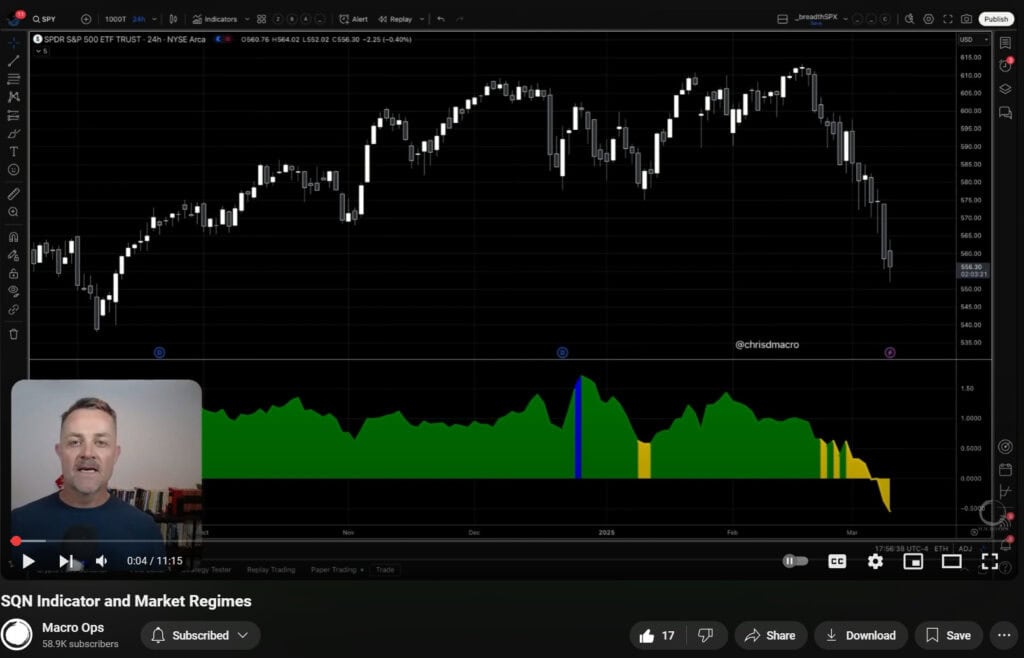The other day I was flipping through Tim Ferriss’ book “Tribe of Mentors” and came across this great section from Adam Robinson. For those of you not familiar with Adam, he’s a rated chess master, founder of the Princeton Review, and now a global macro advisor to some of the world’s most successful hedge funds and family offices — amongst many other impressive things.
What Adam writes about markets in the book is pure gold. It needs to be read by everybody, printed out and taped above your trading desks and then tattooed across your forearms. It gets at a central truth of markets and what we can do as traders (aka. professional uncertainty managers) to best exploit it.
Without further ado, here’s Adam:
“Virtually all investors have been told when they were younger—or implicitly believe, or have been tacitly encouraged to do so by the cookie-cutter curriculums of the business schools they all attend—that the more they understand the world, the better their investment results. It makes sense, doesn’t it? The more information we acquire and evaluate, the “better informed” we become, the better our decisions. Accumulating information, becoming “better informed,” is certainly an advantage in numerous, if not most, fields. But not in the counterintuitive world of investing, where accumulating information can hurt your investment results.
“In 1974, Paul Slovic—a world-class psychologist, and a peer of Nobel laureate Daniel Kahneman—decided to evaluate the effect of information on decision-making. This study should be taught at every business school in the country. Slovic gathered eight professional horse handicappers and announced, “I want to see how well you predict the winners of horse races.” Now, these handicappers were all seasoned professionals who made their livings solely on their gambling skills. Slovic told them the test would consist of predicting 40 horse races in four consecutive rounds. In the first round, each gambler would be given the five pieces of information he wanted on each horse, which would vary from handicapper to handicapper. One handicapper might want the years of experience the jockey had as one of his top five variables, while another might not care about that at all but want the fastest speed any given horse had achieved in the past year, or whatever.
“Finally, in addition to asking the handicappers to predict the winner of each race, he asked each one also to state how confident he was in his prediction. Now, as it turns out, there were an average of ten horses in each race, so we would expect by blind chance—random guessing—each handicapper would be right 10 percent of the time, and that their confidence with a blind guess to be 10 percent.
“So in round one, with just five pieces of information, the handicappers were 17 percent accurate, which is pretty good, 70 percent better than the 10 percent chance they started with when given zero pieces of information. And interestingly, their confidence was 19 percent—almost exactly as confident as they should have been. They were 17 percent accurate and 19 percent confident in their predictions.
“In round two, they were given ten pieces of information. In round three, 20 pieces of information. And in the fourth and final round, 40 pieces of information. That’s a whole lot more than the five pieces of information they started with. Surprisingly, their accuracy had flatlined at 17 percent; they were no more accurate with the additional 35 pieces of information. Unfortunately, their confidence nearly doubled—to 34 percent! So the additional information made them no more accurate but a whole lot more confident. Which would have led them to increase the size of their bets and lose money as a result.
“Beyond a certain minimum amount, additional information only feeds—leaving aside the considerable cost of and delay occasioned in acquiring it—what psychologists call “confirmation bias.” The information we gain that conflicts with our original assessment or conclusion, we conveniently ignore or dismiss, while the information that confirms our original decision makes us increasingly certain that our conclusion was correct.
“So, to return to investing, the second problem with trying to understand the world is that it is simply far too complex to grasp, and the more dogged our attempts to understand the world, the more we earnestly want to “explain” events and trends in it, the more we become attached to our resulting beliefs—which are always more or less mistaken—blinding us to the financial trends that are actually unfolding. Worse, we think we understand the world, giving investors a false sense of confidence, when in fact we always more or less misunderstand it. You hear it all the time from even the most seasoned investors and financial “experts” that this trend or that “doesn’t make sense.” “It doesn’t make sense that the dollar keeps going lower” or “it makes no sense that stocks keep going higher.” But what’s really going on when investors say that something makes no sense is that they have a dozen or whatever reasons why the trend should be moving in the opposite direction . . . yet it keeps moving in the current direction. So they believe the trend makes no sense. But what makes no sense is their model of the world. That’s what doesn’t make sense. The world always makes sense.
“In fact, because financial trends involve human behavior and human beliefs on a global scale, the most powerful trends won’t make sense until it becomes too late to profit from them. By the time investors formulate an understanding that gives them the confidence to invest, the investment opportunity has already passed.
“So when I hear sophisticated investors or financial commentators say, for example, that it makes no sense how energy stocks keep going lower, I know that energy stocks have a lot lower to go. Because all those investors are on the wrong side of the trade, in denial, probably doubling down on their original decision to buy energy stocks. Eventually, they will throw in the towel and have to sell those energy stocks, driving prices lower still.”
Stanley Druckenmiller’s first mentor Speros Drelles — the man Druck credits with teaching him the art of investing — would always say that “60 million Frenchmen can’t be wrong.”
What Drelles meant by that is that the market is smarter than you. It’s smarter than me. It’s smart than all of us. This is why its message should always be heeded. 60 million Frenchmen can’t be wrong…
Markets are incredibly complex which is why there’s a measurable downside to accumulating too much information, as we saw with the horse bettors. It can lead to confirmation bias and overconfidence as Adam points out.
I read a study a couple of years ago. I want to say it was done by the shared research site SumZero. I’ll have to see if I can find the link and add it to this post when I get a chance. But what this study found was that there was a significant difference in performance between short sub-500 word stock pitches and long 10-page+ writeups.
The short and sweet stock pitches outperformed their longer-winded brethren by a country mile.
German psychologist, Gerd Gigerenzer, calls this “The less-is-more Effect”. If you’d like to really dive into this then I highly recommend picking up his book “Gut Feelings”. But, essentially what the less-is-more effect refers to is that heuristic decision strategies can yield more accurate judgments than strategies that utilize large amounts of information. The way I think about this in trading and investing is that if you need 20-pages of notes to convince you to put on a trade then you shouldn’t put on the trade.
Rather, a seasoned trader should have a framework for what constitutes a good trade and a bad one. This framework is focused on the key drivers — the few essential pieces of information needed to make an informed positive expectancy bet. This should be able to fit on the back of a napkin. Literally.
Remember this the next time your scrolling through a 334 slide deck on why Herbalife (HLF) is a zero or reading through a “Macro Strategists” 75-page report on what he thinks the market is going to do over the next 3-months.
Ruthless reductionism and Occam’s Razor may make for cold bedfellows but they’ll help keep you from shooting yourself in the foot. Which, if you can avoid doing, will put you a few steps ahead of your peers.
So remember… Respect the market, seek to get just enough information, and keep things simple but no simpler (to bastardize a popular Einstein quote).










